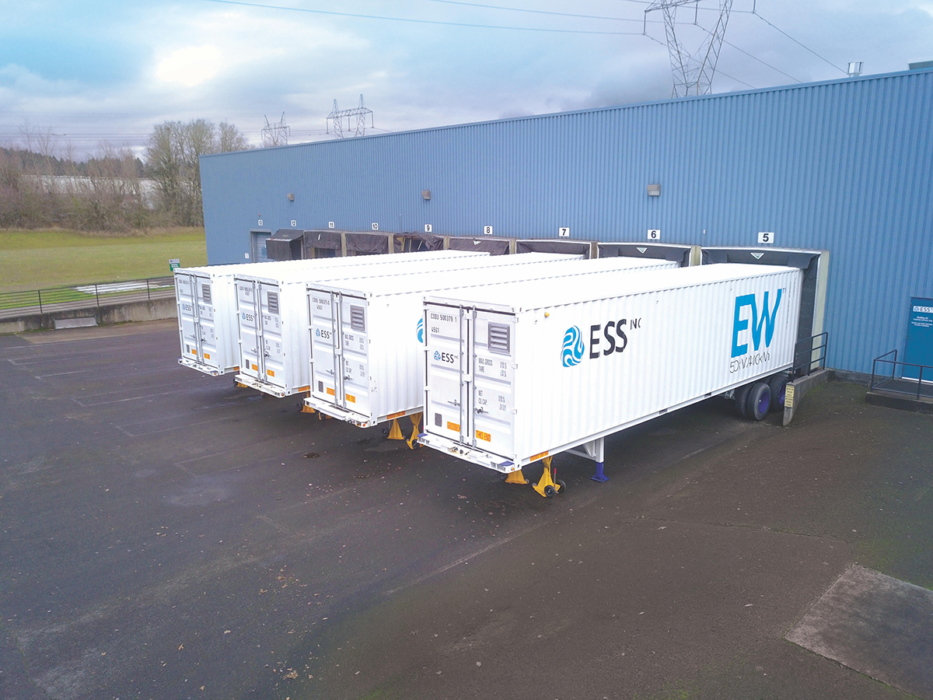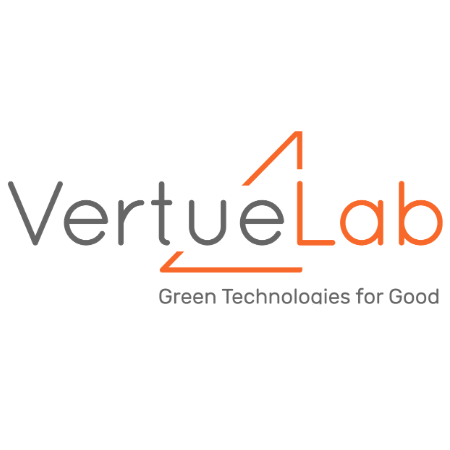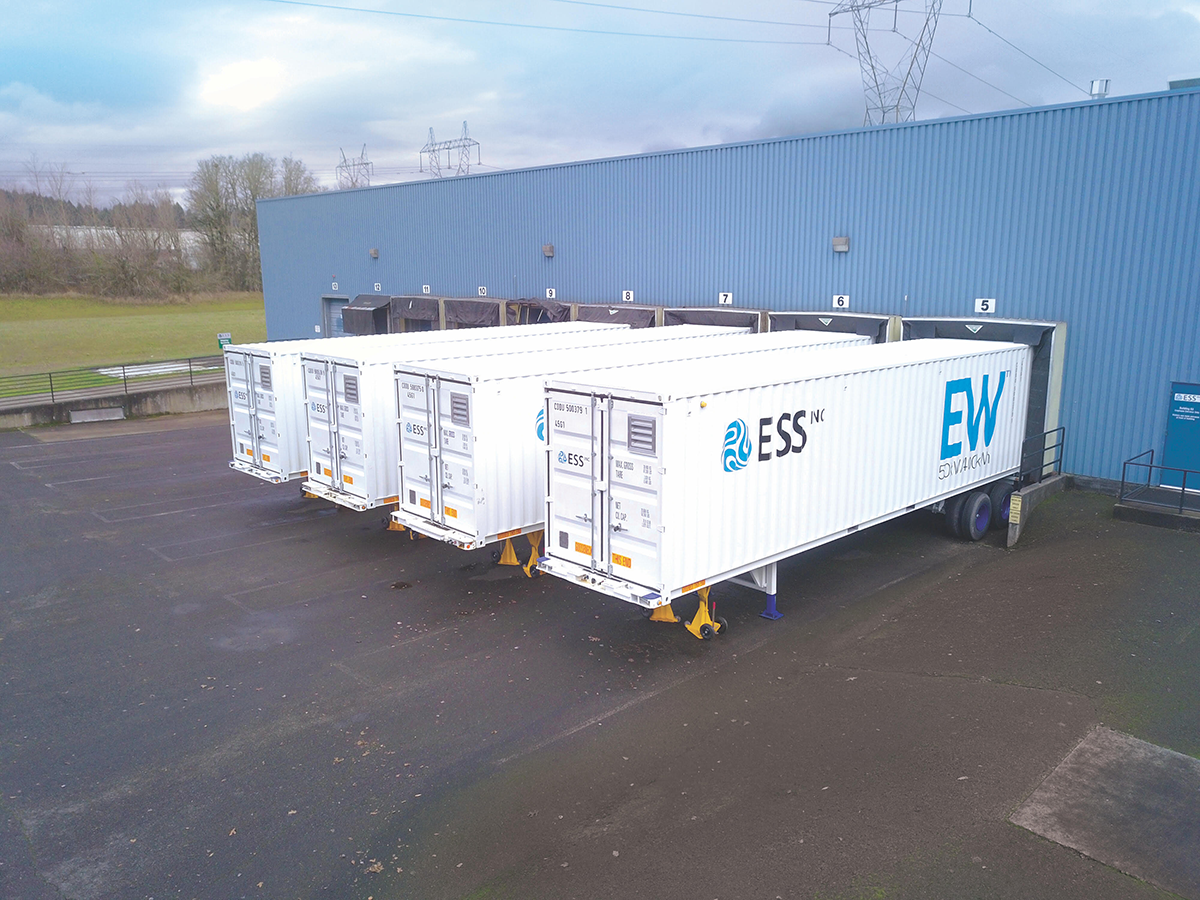
With the support of VertueLab, I’m examining what a carbon-free economy would look like. This is Part 2 in the series.
Part 1: Transportation
Part 2: Power
Part 3: The Built Environment
Part 4: Restoration
In their own devastating ways, heat in California and cold in Texas have telegraphed how our energy systems need to change. When record heat and wind ratcheted up the threat of wildfire over the last couple years, California utilities issued rolling, hours-long blackouts to prevent their power lines from sparking blazes. In February, Texas experienced far longer and far more disastrous power outages during the worst winter storm in decades. More than 4 million people were without power, some for days on end.
“What Texas pointed out is what we’ve known for several years now: these kinds of weather-related events, natural disasters, they’re not one-off things,” said Hugh McDermott, senior vice president of business development for ESS, which manufactures long-duration flow batteries. (ESS is a portfolio firm of VertueLab, this story’s sponsor.) “These events are happening with increased severity and regularity. So Texas, for us, showed why you need long-duration energy storage.”
Our electrical grid is about to face some novel challenges. It must incorporate an increasing share of wind, solar, and other renewables, all while absorbing blows from cold snaps, heatwaves, and severe storms that are becoming more commonplace under our new climate regime. On top of that, there’s going to be a huge increase in demand — the U.S. Energy Information Administration expects global electricity use will surge nearly 80 percent by 2050 — as society electrifies cars, furnaces, and other items that previously were powered by petroleum or natural gas.
Achieving all that without routine dips into darkness like Texas and California have experienced will hinge on vast increases in energy storage, particularly technologies that can store and discharge energy over long periods of time. “With the very high shares of wind and solar power expected beyond 2030 … the need for long-term energy storage becomes crucial to smooth supply fluctuations over days, weeks or months,” the International Renewable Energy Association wrote in a 2017 report.
From our sponsor
In 2020, renewable sources produced about 20 percent of the nation’s electricity, but if renewables are to provide at least 60 percent of our electricity in 30 years, as experts say they must for us to avoid climate catastrophe, we’ll need a way to store the juice from solar panels and wind turbines. To that end, utilities across the country are installing enormous lithium ion batteries — the same type that’s in your phone or an electric vehicle — at a record clip. Last year, utilities installed 1.46 gigawatts of energy storage capacity, more than the previous six years combined. But there’s a catch. Consider two massive installations that Vistra Energy is building in California. Together, the 400 megawatts of battery capacity can power some 300,000 homes — but only for four hours.
For full decarbonization, we need more long-duration storage, typically defined as systems that can discharge electricity for eight hours or more. A report commissioned by the California Energy Storage Alliance cited an “unequivocal and urgent need for significant deployments of energy storage between now and 2045,” saying that state alone needs to install 45 to 55 gigawatts of long-duration storage — a 150-fold increase over the previous decade and enough to power 37 million homes — to meet its climate targets.
It’s important to distinguish between power and energy when discussing electricity storage. Power, expressed in watts, is the rate at which electrical energy, expressed in watt-hours, is transferred. With lithium-ion batteries, power and energy are linked. That’s why high-end electric cars have both longer ranges and ridiculous amounts of horsepower. So to get to eight hours’ worth of stored energy, Vistra would have to double the number of batteries — and thus pay for power capacity it doesn’t need.
“When you get to high levels of sun and wind on the grid, you need to store a lot of energy, but you don’t need any more power,” Jack Brouwer, director of the Advanced Power and Energy Program at the University of California, Irvine, told me. But with long-duration storage solutions like pumped hydropower, flow batteries, or hydrogen, “you can separately scale the amount of power you’re designing a system for, and the energy you’re designing it for.”
This is important for a couple reasons. For one, if utilities can get their hands on enough wind and solar to truly decarbonize the electricity supply, they might have to store it for entire seasons to get them through dark winters or less-windy summers. Also, when power companies and consumers alike lack long-duration storage, they currently use fossil fuels to meet demand. For utilities, that means hanging on to natural gas-fired power plants that can provide reliable power when demand spikes or a lithium battery array’s four hours are up. And on the other side of the meter, customers with critical electricity needs — think hospitals — turn to diesel generators for backup.
Flow batteries, so called because a liquid electrolyte flows through the system, could alleviate both conundrums. Since 2015, Oregon-based ESS has been selling flow batteries with discharge durations of up to 12 hours. Bundled in 320 square-foot shipping containers, their batteries have been used to supply backup power and store renewable energy for everything from wineries to military installations. Meanwhile, the company this year will begin pilot projects with its larger, utility-scale battery that can supply 6 megawatts of power for up to 12 hours.
“Four hours doesn’t cut it anymore,” McDermott said. “And we’re developing technologies to get out to a 16-hour capability over the next couple of years.” Couple a 16-hour battery with solar generation, he said, and you have a 24-hour product. “That’s the holy grail of renewable energy — something reliably putting inputs into the grid around the clock.”
Soon, 12- or 16-hour durations might seem meek. Form Energy, a battery company led by former Tesla executive Mateo Jaramillo, is producing a battery installation in Minnesota that could have a duration of 150 hours — more than six days of continuous power if needed.
If other batteries can store more energy and discharge it over longer periods, why all the lithium love? “We’ve invested in [lithium ion] batteries first, so batteries have come down the cost curve first, and they are the most efficient way to store electricity,” Brouwer said. There will, indeed, always be uses for which lithium batteries are best. If your vehicle is a commuting workhorse, not a heavy-load hauler, and you want enough battery storage to power your home for a few hours, not a week, then Tesla’s lithium ion-powered cars and Powerwall batteries will always be a great option.
But bigger, more intensive operations might require long-duration flow batteries, or another option Brouwer is bullish on: hydrogen.
If produced using renewable power, hydrogen, which can be stored in liquid form, is about as versatile as renewable fuel can get. It can be shipped, moved through pipelines, and — like today’s liquid fuels — can be used in areas that are completely off-grid. And it has the potential for utility-scale energy storage, too. In Utah, the firm Magnum Development has a plan for 1 gigawatt of clean energy capacity, most of which from hydrogen stored in a huge underground salt cavern. Albuquerque startup BayoTech is set to deploy mobile hydrogen generators that could replace their diesel counterparts.
Hydrogen could help decarbonize other sectors of the economy for which batteries aren’t a quick fix. It may be our best bet for ditching petroleum fuel in airplanes, ships, and long-haul trucks. Heavy industry, too, may have to rely on hydrogen to wean itself off fossil fuels.
“Initially, batteries are the only thing we need,” Brouwer said. “But in the future, the vast majority of our primary energy is going to come from the sun and the wind. So for the grid, for vehicles, for heavy industry, and for ships, heavy-duty trucks, trains, and planes, we need the hydrogen vector.
“Primary energy from renewables, batteries, and hydrogen technology,” he continued, “is what is going to enable the entirety of our society to become decarbonized.”
Long-duration storage is by no means a clean-energy panacea. For one, our wildly disconnected energy system — there are about 3,000 utilities in the U.S., which are governed by different regulations in each state — needs to coalesce into a more automated “grid of grids” that coordinates the generation and distribution of power across regions. There will need to be more renewable energy generated in more places — a trend that’s already taking shape. Energy firms are building more and more utility-scale solar and wind arrays, like the 3,000 megawatt Sierra Madre and Chokecherry wind installation in Wyoming, but small-scale projects like community solar arrays are going up, as well.
What long-duration storage provides is the flexibility needed to manage spikes in demand, and to weather events like those that darkened Texas and California.
From our sponsor

VertueLab is a nonprofit that provides funding and business support to climate tech entrepreneurs who are solving today’s biggest challenges. Donate to VertueLab today to have an impact on people and the planet.
Share with a friend | Watch a cat video | View previous newsletters


